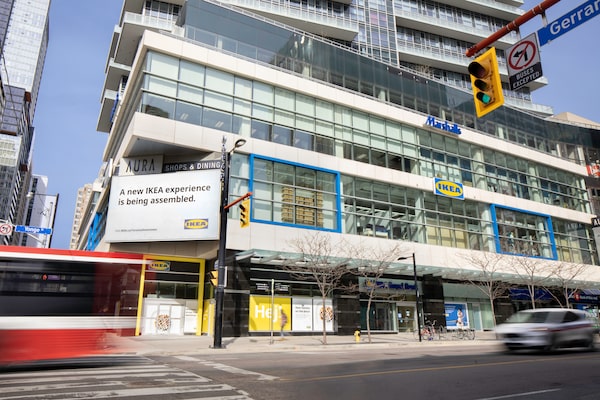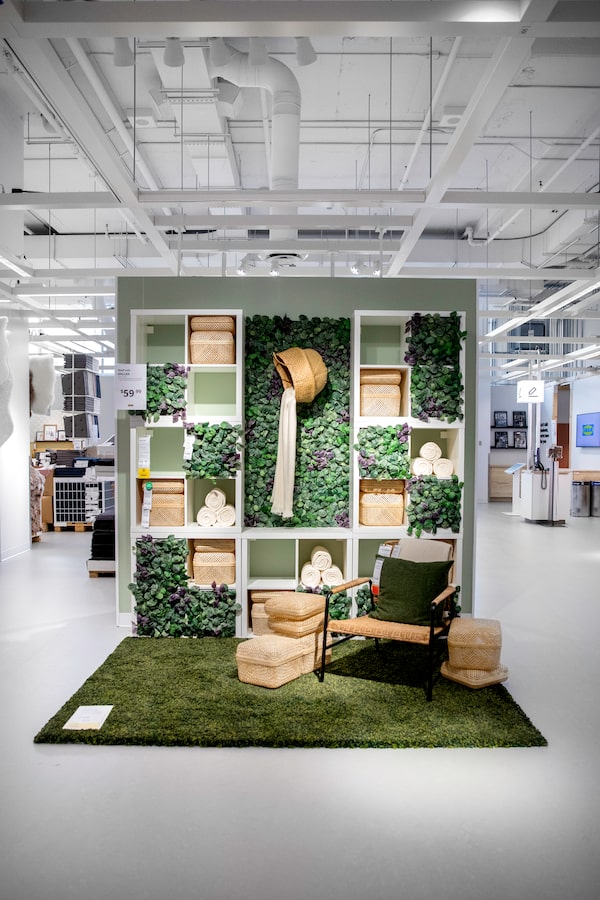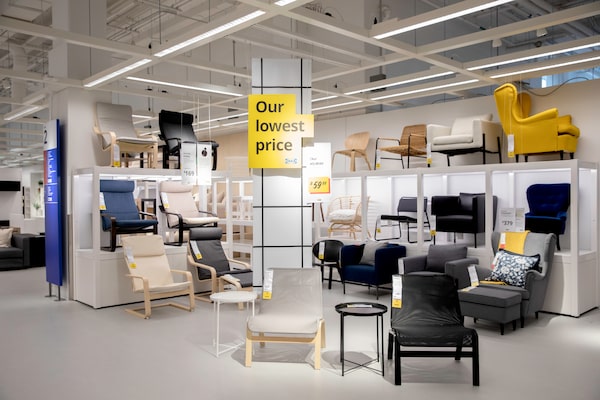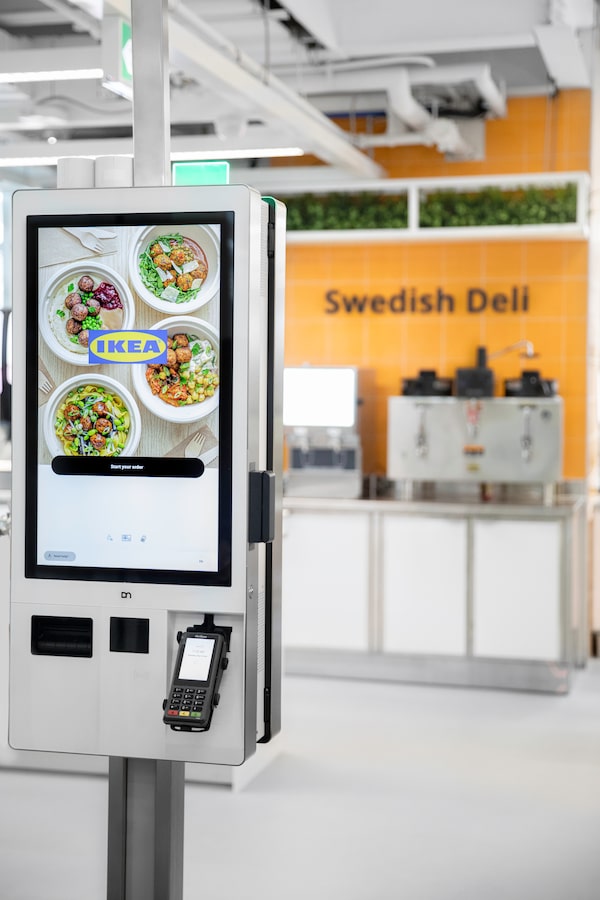
IKEA opened its 'new retail concept' store at the corner of Yonge and Gerrard streets in downtown Toronto in June.Supplied
Historically, the Canadian retail sector has often been slow to adopt new methods of fulfillment, but that is changing fast.
According to Michael Ward, chief executive of IKEA Canada, big box retailers such as IKEA are catching up in part through the establishment of smaller stores in downtown areas and working with third-party providers to handle fulfillment.
“Accessibility is the name of the game,” he says. “The urban strategy is understanding where people are.”
In June, Aura, the company’s “new retail concept” store, opened at the corner of Yonge and Gerrard streets in downtown Toronto. The 66,000-square-foot store – smaller than most regular IKEA stores – is part of the company’s transformation strategy, which brings IKEA closer to where customers live and work, Mr. Ward says.

The rise of e-commerce and decrease of in-store shopping is not a new trend.Supplied
Also part of the strategy is using the services of third-party fulfillment providers because, unlike big box stores found in less intensified areas, smaller stores don’t have the space for in-house fulfillment centres.
Some retailers are rejigging stores by dedicating front-of-house space for try-on or emergency goods while the rest becomes a warehouse.
“Our stores are 1,500 to 2,000 square feet on average,” says Patrick Jobidon, president of PenguinPickUp, which IKEA uses for order fulfillment. “We are not a warehouse. We are a parcel holding company that has a lot of velocity. About 80 per cent of the orders that we receive will be picked up either that night or next day. With such a small footprint you need velocity.”
Customers who aren’t using home delivery can use the service to do pickups and returns, and after hours, can pick up packages from lockers at PenguinPickUp locations. (The company has 35 locations nationwide, including downtown Toronto, Montreal and Vancouver, with plans to open five more by the end of this year.)
“That’s the challenge for retailers,” Mr. Jobidon says. “The power has shifted to the consumer. They want everything right away. That is adding cost to the retailer, [which] forces them to find other ways to save money. We are one of those solutions.”
Inflationary pressures have increased development costs in areas with a tight supply of quality retail assets, further exacerbating an existing supply and demand imbalance.
— John Ballantyne, chief operating officer of RioCan
Mr. Jobidon predicts that in the next five to 10 years, more companies will be renting space to be used as mini-sortation centres so they can access the downtown more quickly – tough to do now because of volume and road traffic.
The onslaught of delivery orders was in part due to the drastic drop in in-store shopping during pandemic restrictions.
Even boomers, the sector with the highest disposable income who were once hesitant to shop online, are now buying from “e-tailers,” says Kostya Polyakov, Canadian national industry leader for KPMG’s consumer and retail practice.
“The folks with the most money all of a sudden went online.”

But Ballantyne says consumers still desire in-person interaction.Supplied
The rise of e-commerce and decrease of in-store shopping is not a new trend, it’s just more visible now, says Mr. Polyakov, pointing to recent KPMG research that shows a decrease in the number of retail leases, as well as the value of smaller-footprint retail leases.
“So, what the big box stores are fundamentally asking is: What are you trying to buy online versus why you would come in-store,” he adds.
But consumers still desire in-person interaction, according to John Ballantyne, chief operating officer of RioCan, a REIT that owns, manages and develops more than 200 retail, residential and mixed-use properties.

Aura offers shoppers a smaller, more accessible IKEA experience.Supplied
They want to shop via multiple channels, he says, and retailers are adapting distribution methods, retail store sizes, layouts and product mixes to better meet their demands.
“Physical store networks in well-populated neighbourhoods are forms of last-mile distribution or delivery facilitation centres,” he says.
Mr. Ballantyne says retailers are looking for cost-effective solutions, factoring in Canada’s geography, the high cost of last-mile deliveries and the challenges of setting up distribution centres in urban settings.
“Inflationary pressures have increased development costs in areas with a tight supply of quality retail assets, further exacerbating an existing supply and demand imbalance,” he adds. “Demand for this type of space is growing.”
Meanwhile, Mr. Ward says IKEA is aiming to open similar Aura locations in more Canadian cities to create a network of connected initiatives, as opposed to big box standalone stores.
In essence, Aura offers shoppers the IKEA experience, but on a smaller, more accessible scale that makes it easy for people to pop into a store on their way home from work.
“That’s the genesis of the next level of ideas,” he says. “[Competitors] are experimenting for sure. Everybody’s trying to figure out what the right combination is.
“It’s not about online or bricks and mortar,” he adds. “It’s how those things work together.”